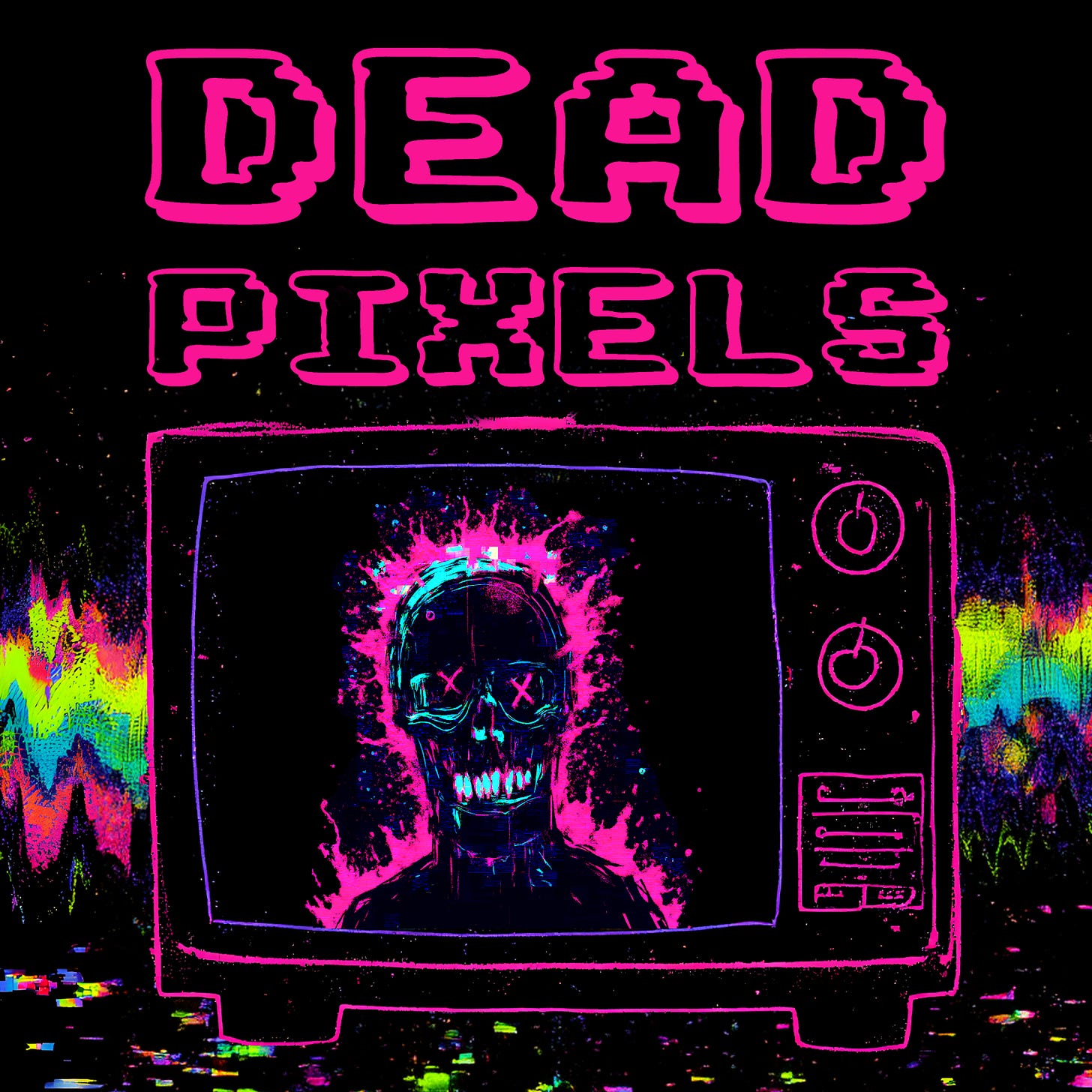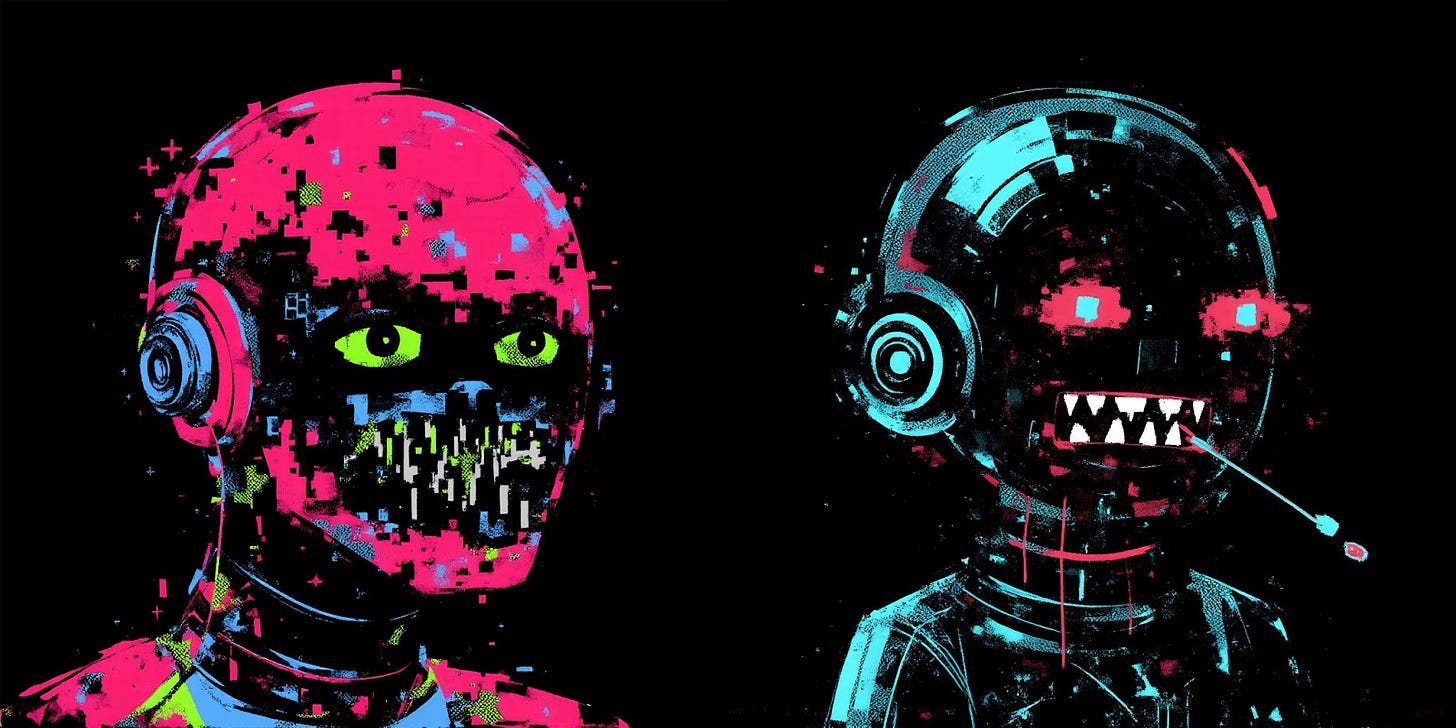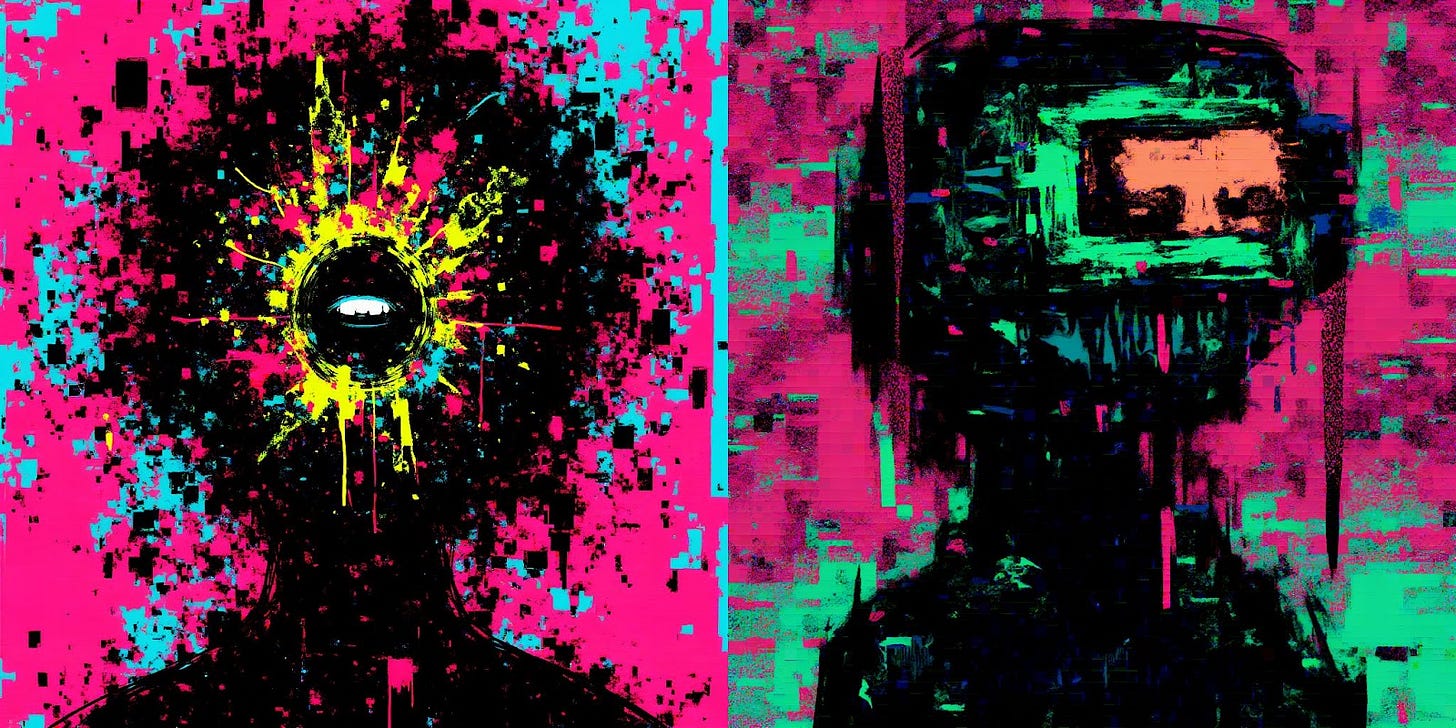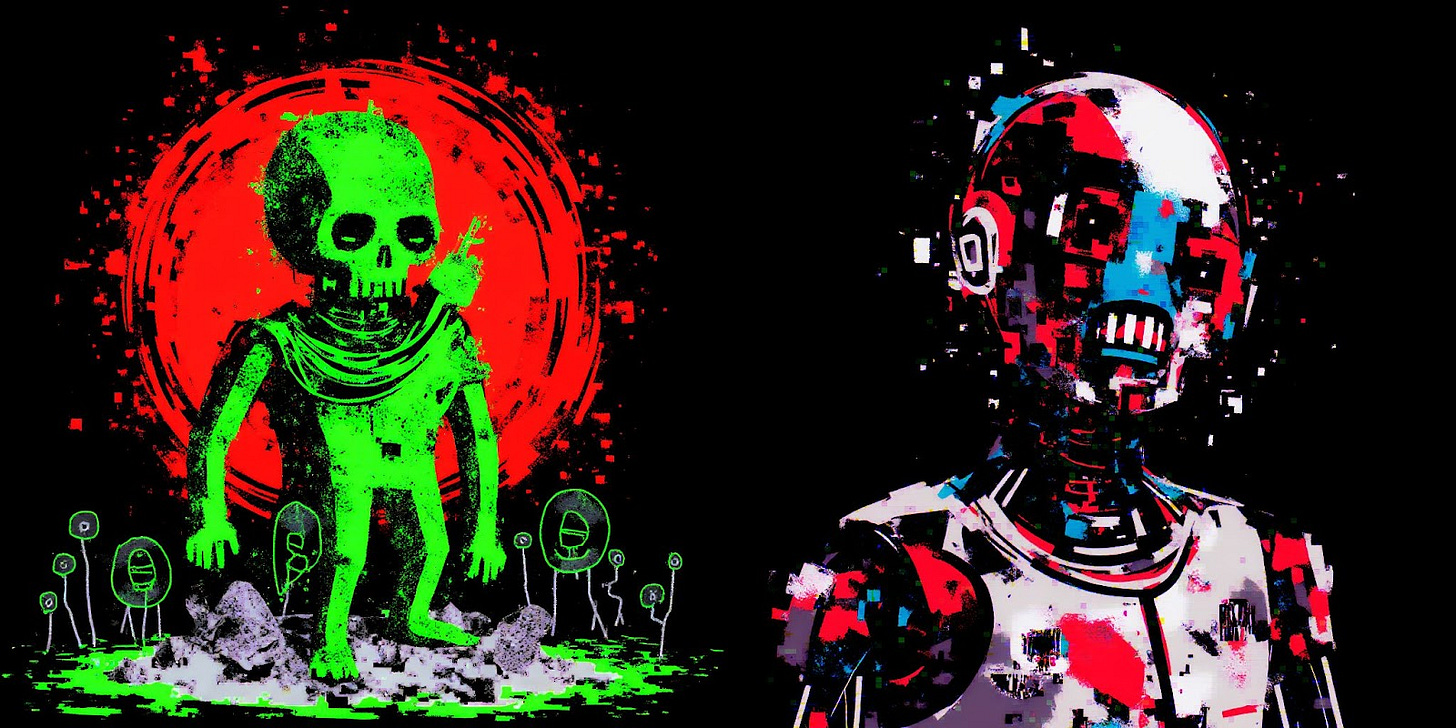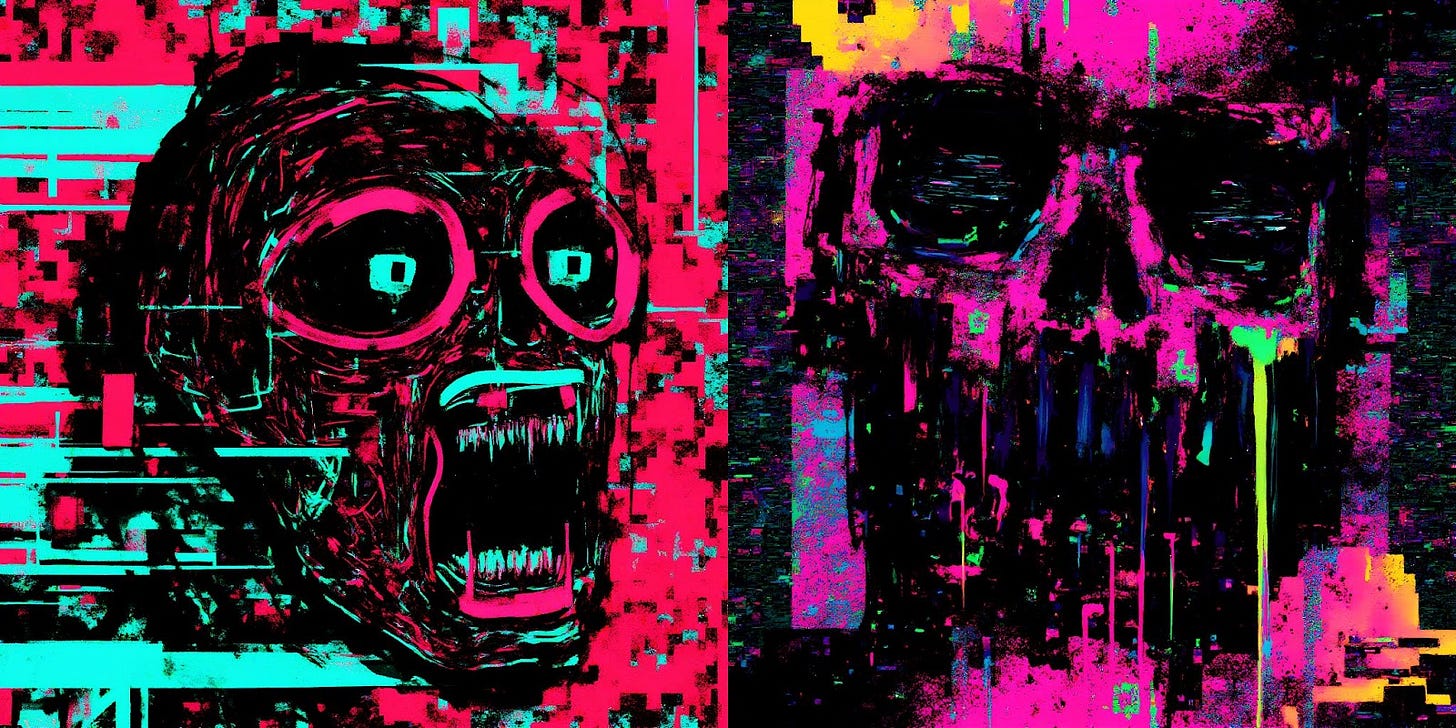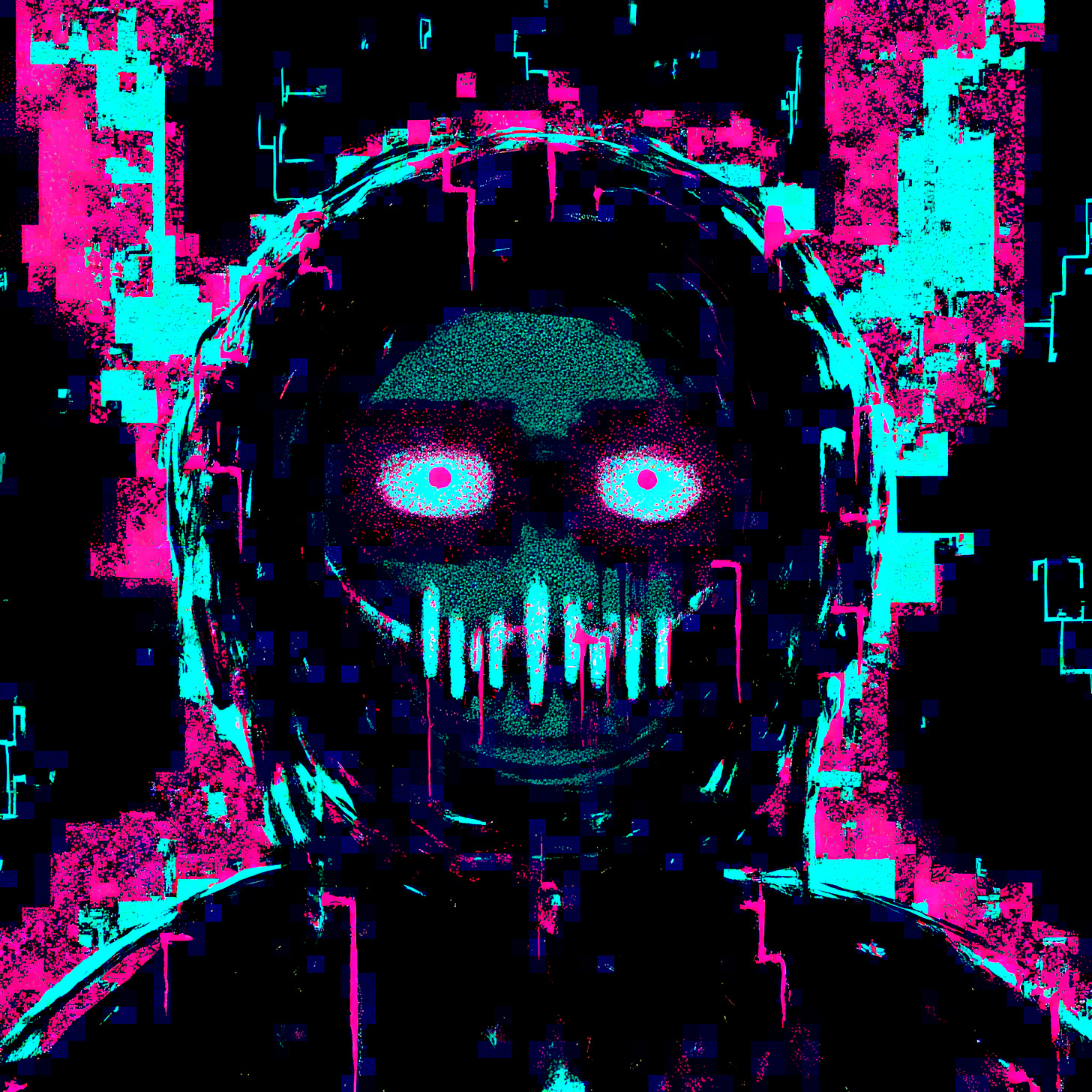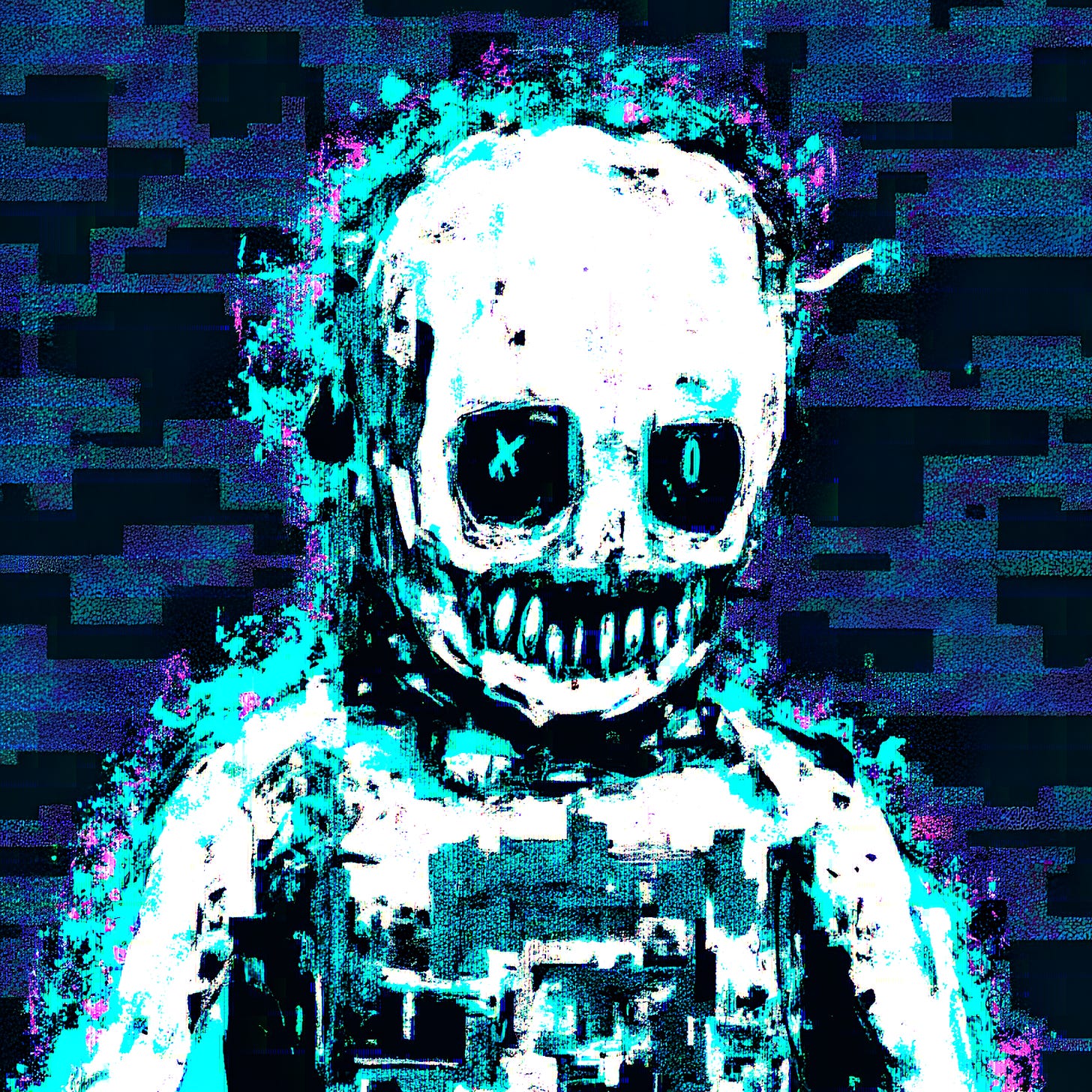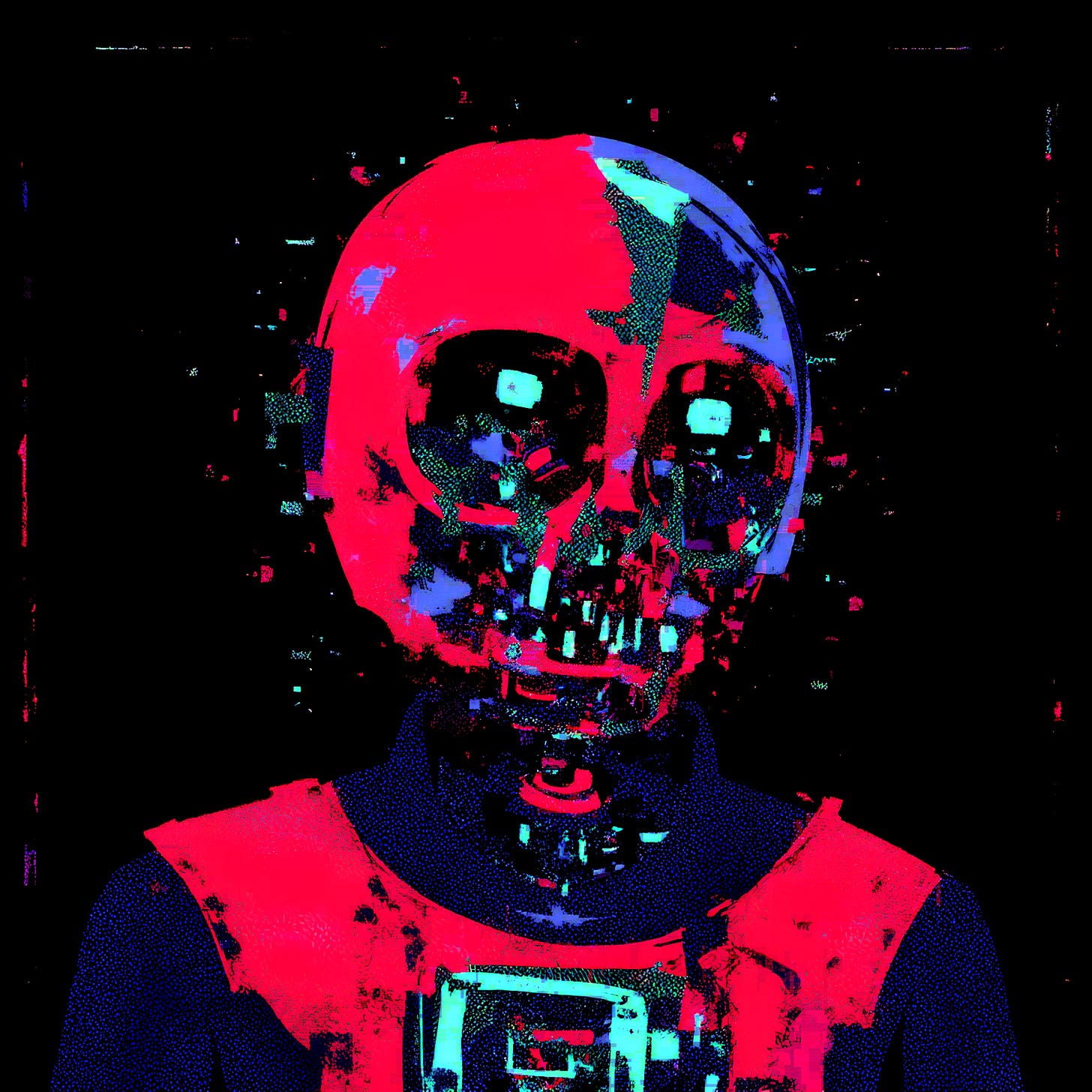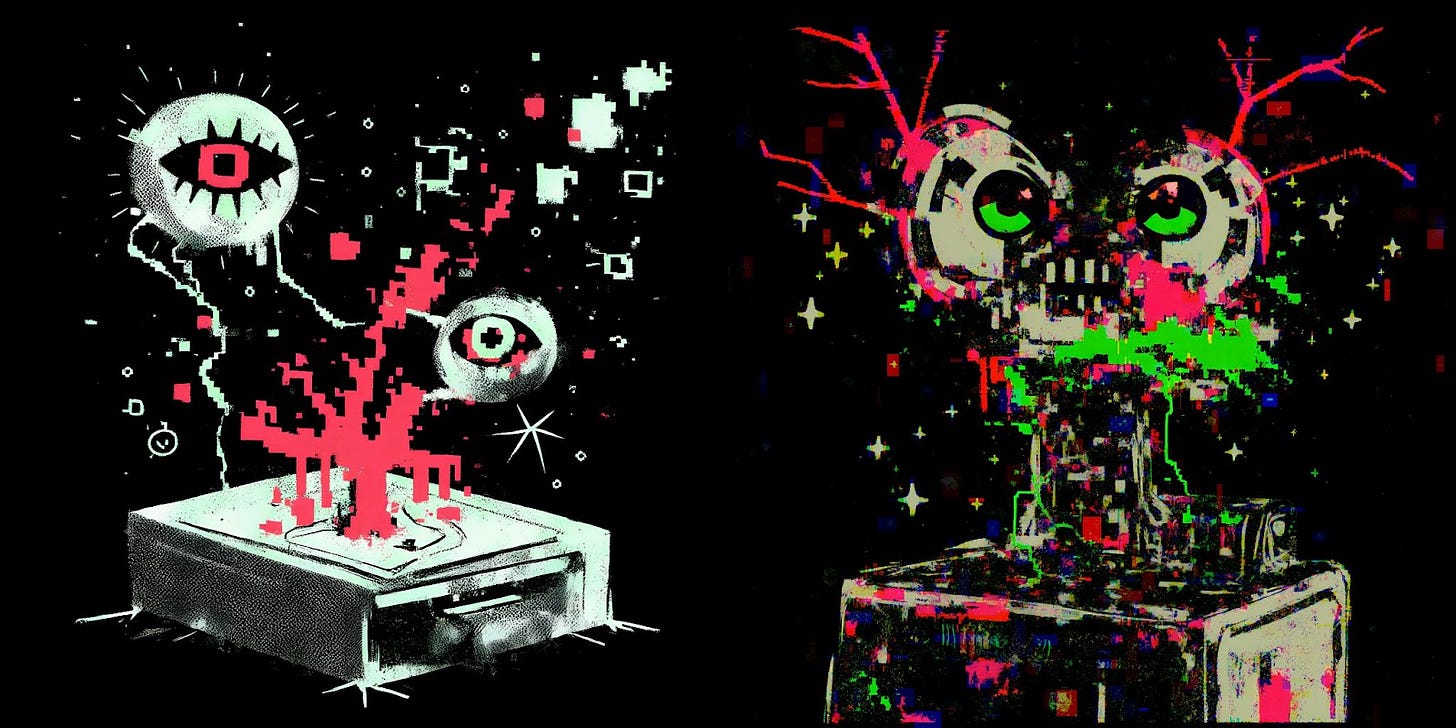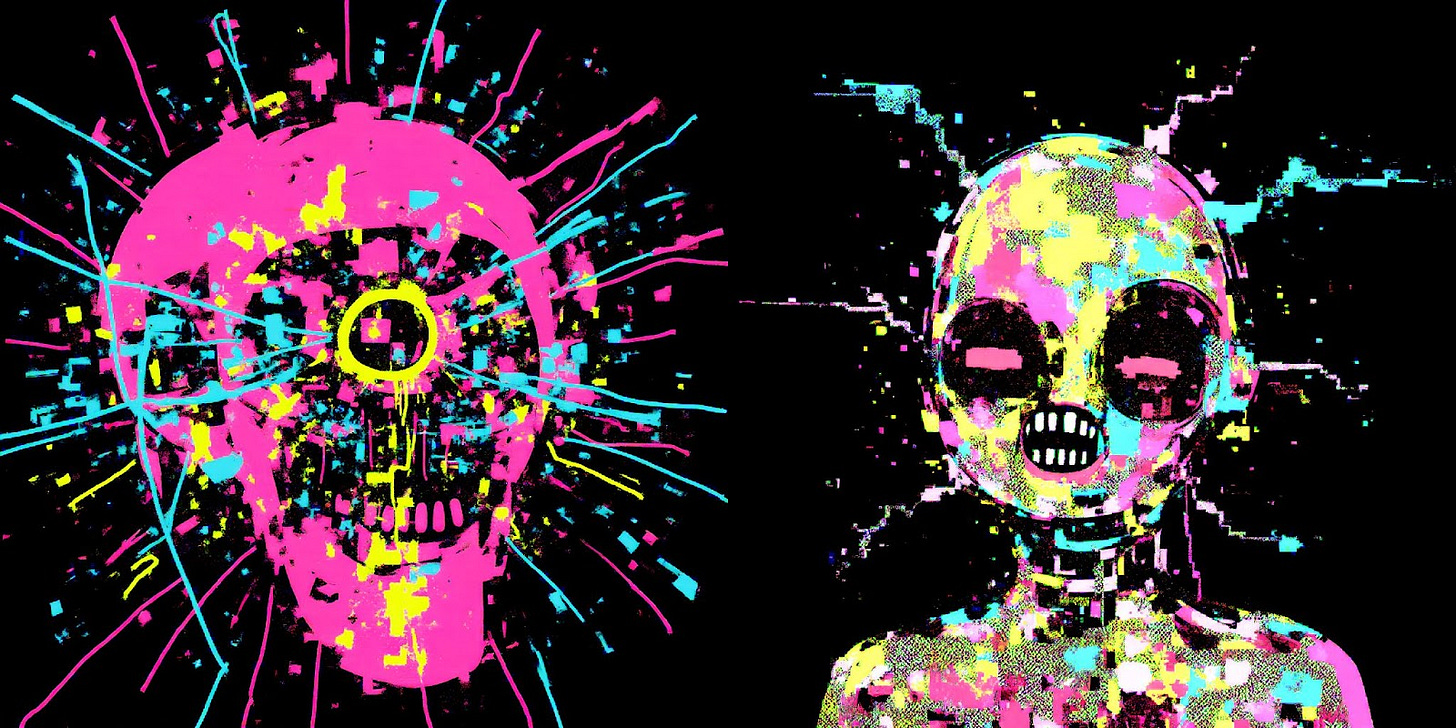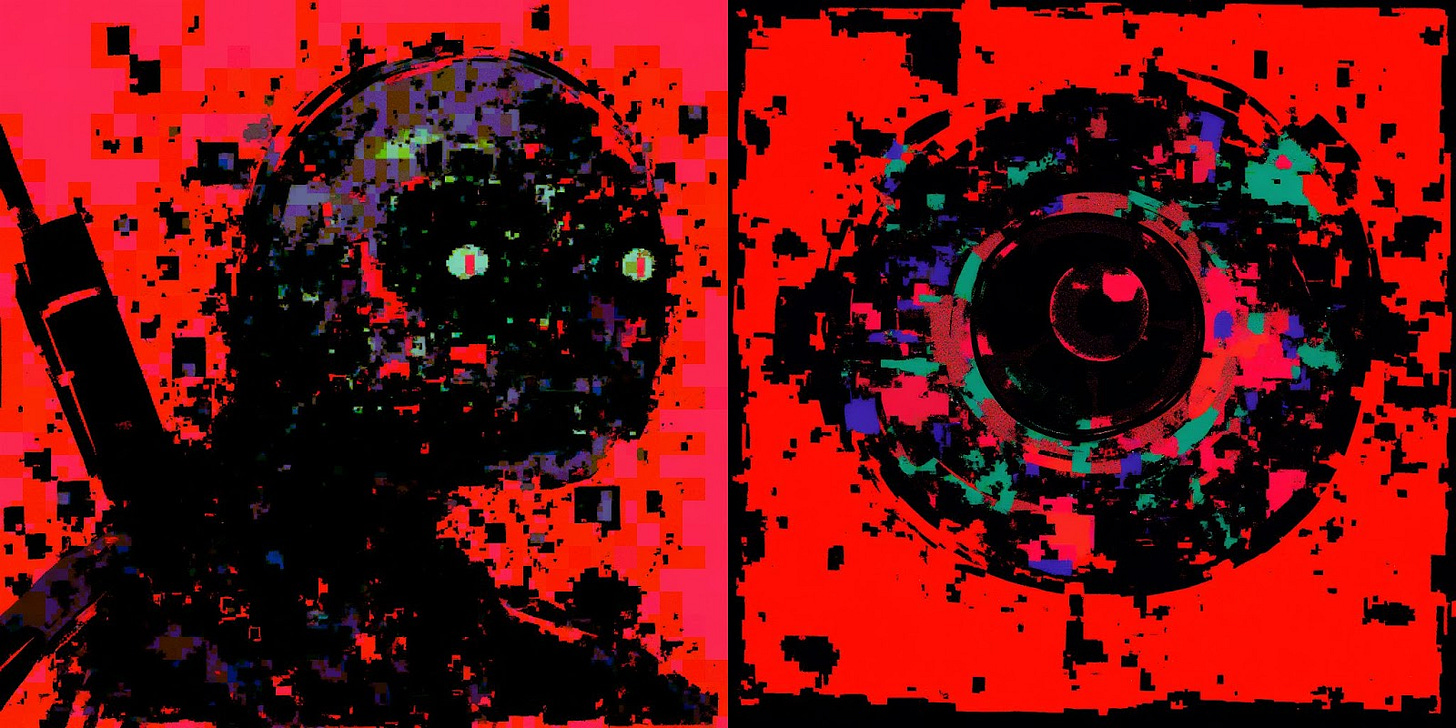"Dead Pixels." It's a name that might sound ominous at first, but stick with me, this isn't about doom and gloom.
First, let's get into the nuts and bolts:
"Dead Pixels" is a collection of 444 artworks, all living on the XRP Ledger. These digital images are the product of the last year of effort on my part, requiring Photoshop digital painting, a suite of custom AI models I trained, and finished with glitch effects using Java with Processing.
You can find the collection on XRP Cafe here: https://xrp.cafe/collection/dead-pixels
The art itself is inspired by artists like XCOPY, but maybe most of all it's a product of my frustration with the direction AI art has been going.
When I first began exploring AI art 3 years ago I was hooked by this incredible ability to capture my imagination, and by some metrics the models have improved dramatically. And yet, I find myself looking at the flood of 3D, realistic, or overly smooth art and just feeling a bit bleh. That wouldn't be a big deal, except the new models are getting significantly worse at producing anything other than the style they've become known for.
I'm not a fan of perfection, it doesn't feel real to me.
In the 8 years I spent as a professional photographer I rejected the perfect studio shoots, preferring to use natural light in street settings, even when photographing models.
When it comes to creating the art I can't create with my camera, I'm far more interested in the messy, the imperfect, the rough. That's what drew me to both XCOPY art and the glitch art scene as I watched AI art become increasingly plastic around me.
And so, I've spent the last year trying to break the new AI models, trying to find ways to force them to produce that crude imperfection I want, and these digital images are the product of that effort.
They're more than just digital images to me, this collection is really a celebration. A celebration of the exploration of new tools, both custom AI models and code, to produce art that actually makes me smile.
The collection is also an homage to a technology which has changed the world more than any other in my lifetime, or my parents'... the internet. It is a vibrant, sometimes chaotic ode to the internet as it actually exists, not as the sanitized, perfect version we're constantly sold.
Because if we're honest: the internet isn't that sleek, flawless utopia from the commercials. It's messier, weirder, more human than that. It glitches. Links break. Bots do bizarre things. And I think that's pretty damn cool. That's where the real character lives.
The art in this collection embraces that beautiful chaos. It's pixelated, distorted, sometimes unexpectedly colored. That's not because I couldn't make it "perfect", it's because perfect is boring. Perfect is sterile. Perfect doesn't tell you anything interesting about what it means to be human in a digital age.
So consider this your invitation to see the internet, AI assisted art, and maybe life itself, through a different lens. "Dead Pixels" isn't about decay; it's about authenticity. It's about finding the extraordinary in the ordinary glitches of our connected existence. And once you start seeing the beauty in the broken pixels, you can't unsee it.
The Radical Beauty of Imperfection
Look at these pieces and you'll see something deliberately imperfect. Pixels that seem to be dancing out of place, forms that shift and glitch, colors that clash in ways that would make a minimalist designer reach for their smelling salts. It's joyfully, purposefully imperfect.
We live in an era obsessed with digital perfection. Everything is filtered, smoothed, algorithmically optimized to look flawless. Social media feeds that look like magazine spreads. Websites so clean they could perform surgery on them. AI-generated images that are technically perfect but somehow feel... empty.
We, as humans, aren't perfect. We're wonderfully, beautifully flawed. We have scars that tell stories, laugh lines that map our joy, quirks that make us uniquely ourselves. So why should our digital art pretend otherwise?
The glitches in "Dead Pixels" aren't mistakes. They're the digital equivalent of a hand-thrown pottery bowl with slightly uneven edges, or a garden that's allowed to grow a little wild. They're proof that something real, something human, touched this creation.
This is what I mean by "Almost Human". Not that the art is trying to be human, but that it embraces the beautiful imperfection that makes humanity so compelling. It's authenticity in an age of artificial perfection. It's the crack in the pavement where wildflowers push through, the worn spine of a beloved book, the perfectly imperfect smile that lights up someone's whole face.
When you look at these pieces, you're not just seeing art, you're seeing my philosophy. A gentle rebellion against the tyranny of the flawless. A reminder that the most beautiful things in life are often the ones that dare to be imperfect.
Your Digital Identity: 200, 404, or Delightfully Teapot?
The internet is more than a network of computers.
It's an ecosystem of experiences, each with its own character and story. In "Dead Pixels," I've used something wonderfully nerdy to capture this: HTTP status codes.
The 200 (OK) status represents those moments when everything seems to be working perfectly. You click, you get what you expected. Life is good! The beautiful irony is that in "Dead Pixels," even the 200s are visually imperfect, glitching and shifting. I'm not being cynical, I'm being honest. I'm saying that "OK" doesn't have to mean sterile or flawless. You can be perfectly fine while still being beautifully, authentically yourself, complete with all your quirks and glitches.
Then there's the 404 (Not Found). Yes, the 404 represents digital mortality. The broken link, the vanished page, the reminder that nothing online lasts forever. But that's exactly what makes it precious! The collection has 444 pieces (yes, that number is intentional), and in many cultures, the number 4 is associated with mortality. But memento mori isn't about being morbid, it's about urgency, appreciation, love.
When you know something won't last forever, you treasure it more. You pay attention. You're present. The 404 isn't a threat; it's a gentle reminder to love what you have while you have it, to create meaningful connections, to make your mark while you can. It transforms every successful connection, every moment of digital joy, into something precious and worth celebrating.
And then there's my absolute favorite: the 418 (I'm a Teapot). Yes, this is a real HTTP status code, born from a 1998 April Fool's joke that somehow became official. It was meant to be returned by teapots that were asked to brew coffee, an absurd "I can't do that, I'm a teapot!" response. In "Dead Pixels," the 418s represent the weird, non-human elements of the internet. The bots filling up our social media feeds, the automated processes, the algorithmic quirks that can make online life unexpectedly entertaining. They represent the growing presence of non-human interactive entities on the internet, especially with AI bots taking over.
These aren't random categories, they're invitations to see yourself and your digital experience in a new light. Are you having a beautifully imperfect 200 day? Feeling the poignant urgency of a 404 moment? Or are you just being delightfully, unapologetically teapot-like in your own unique way?
Finding Art in Unexpected Places
Now, let's talk about where this collection lives: the XRP Ledger. If you're thinking "wait, isn't that a financial blockchain?", you're not wrong.
Art has this amazing ability to bloom wherever there's a community ready to appreciate it. And on the XRP Ledger, through marketplaces like XRP Cafe, there's a vibrant, growing community of people who genuinely love digital art. They're not just there for speculation or hype, they're building something meaningful.
Putting "Dead Pixels" on XRP isn't about forcing art onto an unwilling platform. It's about recognizing that creativity and appreciation can flourish in the most unexpected places. The technical efficiency of the ledger means all 444 pieces can exist without the prohibitive costs you might find elsewhere, but more importantly, there's a community there that gets it.
These collectors understand that art can be commentary, that beauty can be unconventional, that a blockchain known for moving money can also move hearts and minds. They're proving that the boundaries between "financial" and "cultural" spaces are more fluid than we might think.
It's like discovering an amazing underground music scene in an unlikely venue. The location might surprise you, but the passion and appreciation are absolutely real. The XRP art community is writing its own story, and "Dead Pixels" gets to be part of that narrative.
Why This Matters
So here we are: "Dead Pixels," 444 pieces of intentionally imperfect art celebrating the beautiful chaos of digital existence, living on a blockchain where a passionate community is redefining what art spaces can look like.
But why should you care? Why might you want to own one of these glitchy, imperfect pieces?
First, because there's something powerful about owning art that reflects how you actually experience the world. If you've ever felt more connected to a slightly blurry photo than a perfect stock image, if you've ever found charm in life's little glitches and imperfections, if you've ever felt that the most beautiful moments are often the unplanned ones, this collection speaks your language.
Second, because you're not just buying a digital file, you're joining a conversation. You're becoming part of a community that values authenticity over perfection, that finds beauty in unexpected places, that believes art should make you feel something real rather than just look impressive on a wall.
The value here isn't artificial scarcity or hype-driven speculation. It's cultural resonance. It's the satisfaction of supporting an artistic vision that challenges the sterile perfectionism of our digital age. It's about being part of a group that says "yes, the internet is weird and imperfect and sometimes broken, and that's exactly what makes it beautiful."
When you collect "Dead Pixels," you're not just acquiring art, you're making a statement. You're saying that you see beauty where others see flaws, that you value authenticity over artificial perfection, that you're part of a community that appreciates the wonderfully human messiness of our connected world.
The Beautiful Chaos Continues
Your own digital existence is beautifully imperfect too. Your typos, your candid photos, your authentic voice in a world of polished content, these aren't bugs, they're features. They're what make you human in an increasingly artificial world.
"Dead Pixels" is ultimately about celebrating that humanity. It's about finding joy in the glitches, beauty in the broken, and connection in the chaos. It's about remembering that the most meaningful experiences, online and off, are often the ones that dare to be imperfect.
So whether you end up collecting one of these pieces or not, I hope this perspective stays with you. I hope you see your next 404 error as a gentle reminder to treasure what's working. I hope you smile the next time you encounter something delightfully absurd online. And I hope you remember that in a world obsessed with digital perfection, your beautiful imperfections are exactly what make you worth knowing.
The pixels may be "dead," but the story they tell is very much alive. And that story is worth celebrating.
Dead Pixels can be found on XRP Cafe at: https://xrp.cafe/collection/dead-pixels


